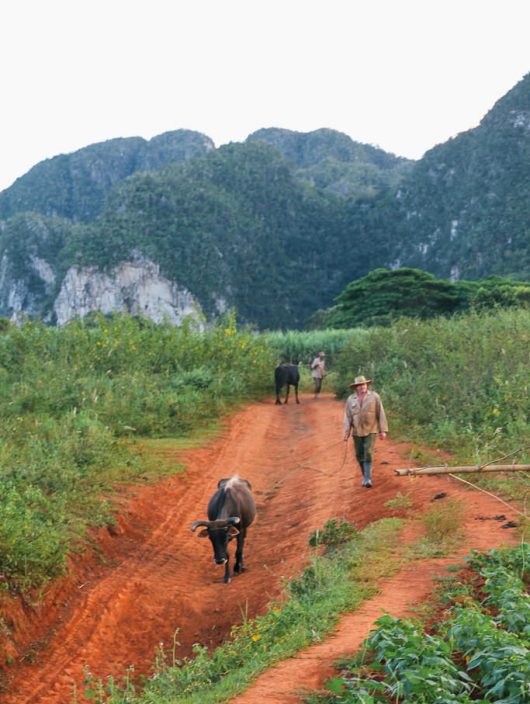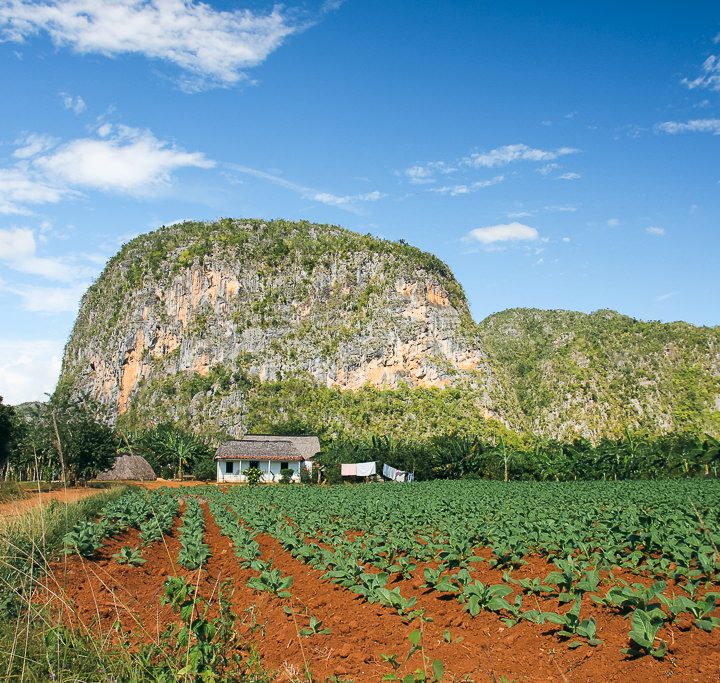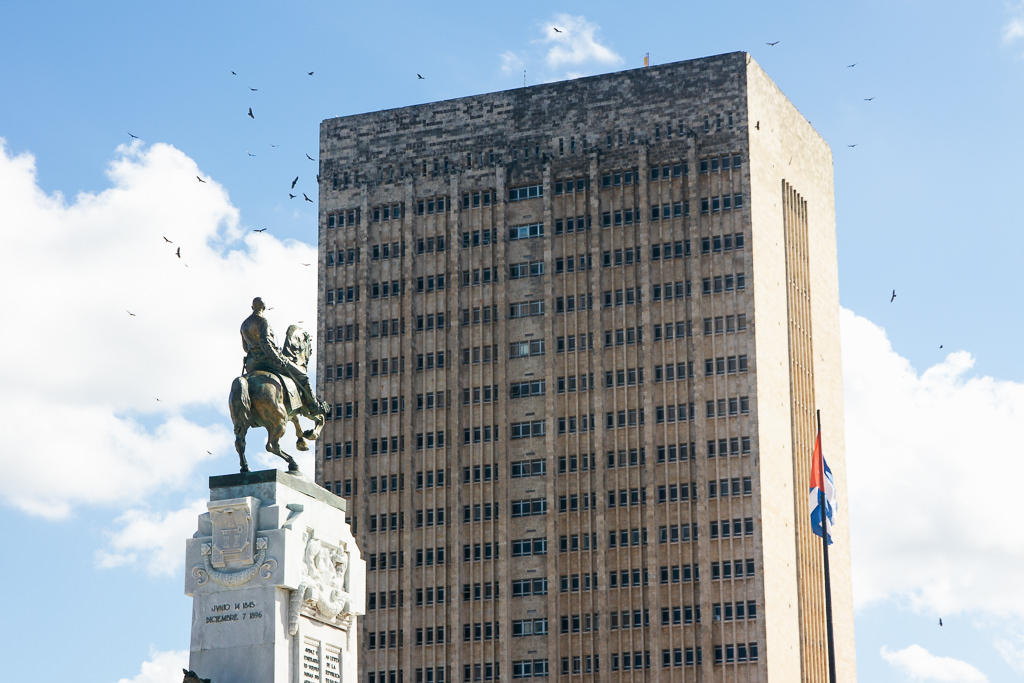
Cuba Travel Guide (Backpacking Or Budget Style) • Costs + Travel Tips
Table of Contents
“A country of contrasts”. This phrase may be a travel writing cliche, yet I can’t avoid saying it about Cuba — a country that constantly reminds you of its contrasts.
Yes, Cuba has white-sand Caribbean beaches, charming cities with columned colonial-era verandas, and beautiful tobacco regions dotted with knobbly karst mountains — not to mention incredibly friendly people.
And due to its unfortunate circumstances, Cuba is indeed a surreal kind of time machine, with 1960s era cars still driving the streets. You’ll definitely feel like you’re in a wildly unique place.

And yet, Cuba is clearly also a country that isn’t functioning very well. It suffered for decades under its authoritarian regime and from a lack of development (as well as a US embargo). At times, traveling in Cuba can be a bit frustrating, at least if you’re unprepared for what some aspects are like.
But fear not: the following tips and impressions can help you get the most out of your trip to this ultimately wonderful destination.
1. Talk to the locals!
I know, this may seem like rote advice.
Of course you should talk to the locals — as you should anywhere.
Yet I found it especially rewarding in Cuba given that the people are typically very open and interested to speak to you.

In Viñales, I met a photographer working on a book about tobacco growing. While asking for directions in Cienfuegos, I unexpectedly met a Cuban Olympic boxing champion. And in Havana, I got acquainted with a group of medical students which led to us sharing stories from our respective countries over beers. That’s just to name a few encounters.
Perhaps it was just my subjective experience, but I felt that many Cubans were eager to chat and would often take their time when meeting a stranger.
2. Cuba is both happy and melancholic
Something to be prepared for is that traveling in Cuba can be quite bittersweet.
Is it a fun country filled with salsa dancing, rum cocktails, vintage cars, colorful culture, and all the rest of it? You bet! It’s absolutely a vibrant, friendly, and delightful country.
But it’s also a place that’s been through a lot.

The system of government doesn’t work at all, the food is bad, many buildings are crumbling, and a lot of things seem like they’ve been forever stuck in the 1960s. Many Cubans dream of escape.
You’ll surely leave Cuba with an increased empathy with the people who live there. Just know there’s the romantic ‘tourism image’ of Cuba as well as the real country of Cuba. You can enjoy the former while learning more about the latter.
That said, it’s impressive how joyful Cuba feels despite the hardship experienced by many people. I found my trip in Cuba quite eye-opening and an overall very positive experience.
3. It’s fun to stay with Cuban families
One of the most fun aspects of backpacking Cuba is using its officially sanctioned network of local family-run accommodation.
It once used to be that in order to travel in Cuba you had to stay in large state-run hotels. These days, you can choose to stay with the locals in ‘casa particulares’.

You can recognize these places by the sign on the door: a blue arrow on a white background. Any house with this sign functions like a type of bed & breakfast. You could actually just ring the doorbell to see if they have a space available, though some casas can also be booked online through platforms like Airbnb or Hostelworld.
What often tends to happen is that the first casa you stay will recommend your next place to stay in another destination — usually another casa run by some brother, aunt, or friend of the family. It’s fun to hop around these informal networks and get introductions this way.
Some casas particulares are just spare rooms, so a bit like a homestay. Others are almost like a mini guesthouse, with a separate entrance or annex for the guests (these are called cuartos independientes). Prices are fairly standardized, usually starting around $25 per night.
The casas are super friendly and local places to stay, often letting you connect with the host and enjoy some homecooked meals. I actually recommend eating at your casa particular as the restaurants tend to be expensive and not so good.
4. The food is… not the best
They often say the best Cuban food can be had outside of Cuba, like in Miami, which has a large Cuban emigrant population.
Due to rationing, limited ingredients, and a loss of entrepreneurial culture, the food is mostly, well, pretty crap in Cuba.
Just to give you an idea, something as simple as garlic can be hard to come by in this country — it’s even called “white gold” because it’s so sought after. There is plenty of food in Cuba, mind you, just maybe keep your expectations low when it comes to seasoning or variety.

Of course, you can still find good restaurants in Cuba. I also enjoyed many of the home-cooked meals that I had at the casa particulares. But overall the food tends to be quite repetitive and bland.
I came to Cuba as a backpacker already accustomed to the delicious cheap eats and street food in Mexico, my previous destination. I was sad to discover that the main cheap options in Cuba are bad pizza with cheese, spaghetti with cheese, or bread… with cheese.
5. You can travel Cuba cheaply
Before I went to Cuba, I was somehow given the impression that it’s an expensive destination. This probably came from really outdated information, as in the 1990s often your only option was to stay in pricy government-owned resorts.
But you can definitely go backpacking in Cuba or travel there on a budget.

Cuba is maybe not the cheapest destination on Earth but hardly the most expensive either. I spent about $40 per day while splitting accommodation costs with a friend.
If you’re a solo backpacker usually staying in dorms, then you may find Cuba a bit more expensive, as private rooms are the norm (with only some dorm-style accommodation existing mostly in Havana).
Some typical costs in Cuba (converted to USD):
- Room in casa particular: $20 – $25
- Breakfast at a casa particular – $4 – $5
- Dinner at a casa particular – $7 – $9
- Meal in normal restaurant: $10 – $16
- Coffee at a local place – $0.20
- Cheap meal at a non-tourist place (e.g. pizza, spaghetti) – $3 – $4
For transportation costs, check out the website of bus company Viazul.
In some cases, I found it quicker or cheaper to share a long-distance taxi. I did this between Havana and Vinales, where it actually worked out better (and it was probably more fun) to do it with a private driver. The taxis can surprisingly be cheaper when shared than the tourist-focused Viazul buses.

6. Backpacker hostels are a bit different
If you’re used to staying in hostels, know that what’s advertised in Cuba as a ‘hostel’ will be just a casa particular that’s aimed at backpackers.
These days, sites like Hostelworld are allowed to have listings in Cuba. Though the hostels usually don’t have dorms and are only allowed by the government to have one or two rooms. So, often there might be at most 5 or 6 other guests during your stay.
This is unlike the hostels in other countries, though it also means there are absolutely no cookie-cutter chains or commercialized hostels in Cuba. It’s all very small-scale, intimate, and typically having a “traveller hostel” type of atmosphere.
Some hostels in Cuba do welcome a larger number of guests. For example, Cuba 58 Hostel in Havana has a total of 18 beds, and Hostal Corazon del Mundo has 14 beds, though this is the exception. If you’re looking for a livelier atmosphere, consider one of these two hostels to start your trip.

7. Travel insurance is mandatory
One more thing to be aware of before traveling to Cuba is that you are required to have travel insurance. The Cuban government has made this a mandatory requirement for all foreign visitors. It has to cover medical expenses, including coronavirus coverage.
Not all travel insurers actually cover Cuba due to US-imposed restrictions. I recommend Heymondo travel insurance, which has global coverage that includes Cuba.
8. ATMs may not work
Cuba is almost entirely a cash economy. It’s wise to bring hard currency like US Dollars or Euros with you to exchange for pesos.
There are ATMs but not all international bank cards will work with them. American cards, in particular, may not work. American Express and Diners’ Club are not accepted at all, while Visa and Mastercard generally will be, though mainly from non-US cardholders.
Ask your bank ahead of your trip whether you can take money out in Cuba.

9. You no longer need two currencies
Tourists used to need a special currency (the “CUC”) to pay for things in Cuba. Since 2021 this no longer exists. If you read about the CUC in old travel guides, you can ignore it.
10. Don’t miss Viñales!
Havana is usually the focus for many trips to Cuba, but if you visit even one other place, make sure it’s Viñales.
This town in Cuba’s tobacco region is about a 5-hour drive from Havana. You will see valleys surrounded by rugged limestone hills and filled with interesting flora and fauna. You can hike or cycle through the unique and picturesque landscapes around the town. Be sure to also visit a tobacco farm to learn about the tobacco-planting and cigar-making process.



After some initial difficulties in Havana, I think it was in Viñales that Cuba truly clicked for me.
I had such a great time exploring the valley, hiking, and learning about the tobacco culture. At night, I went to a super fun reggaeton party inside a cave bar (Palenque de los Cimarrones). After probably a few too many Havana Club mixers, I took a mint-colored vintage taxi back to our guesthouse. While watching all the Cuban scenes from the open window of the taxi, my mind just went “holy crap I’m really in Cuba… this is insane”. Cuba can definitely put a spell on you.
11. But maybe skip Varadero
Varadero is Cuba’s main beach resort, catering heavily to Canadian tourists who often fly there directly. I spent a few days in Varadero but thought it was ho-hum, so if there’s one place to cut from your itinerary I’d suggest it should be this one.

There’s a nice beach and some decent hotels, but in my view it’s not really what you come out here all the way for. You can honestly find better beach resorts in other countries, so personally, I’d focus on the cultural experience in Cuba. Since Varadero is quite commercial, it’s also more expensive.
Instead of Varadero, consider destinations such as Cienfuegos, Trinidad, Santa Clara, and beyond.
12. Knowing some Spanish is useful
If you can speak some Spanish this will definitely help you connect with Cuba a lot more.
That said, when I visited Cuba I still only had very basic beginner knowledge of Spanish and survived just fine. Sometimes this was using gestures, other times through meeting English-speaking Cubans.

13. You can enter if you’re American
Due to US sanctions, it’s long been more difficult for Americans to visit Cuba, but it is not impossible. Firstly, there are now visas that let you visit for specific reasons, such as ‘cultural exchange’.
Although illegal, you can also go to Cuba as an American and just not tell anyone. When I traveled in Cuba I did so partly with two Americans who had simply flown to Havana from Mexico. The Cuban border agents won’t stamp your passport if you ask them and they don’t care if you’re an American visiting Cuba. As long as you don’t leave a digital trace (e.g. attempting to use a bank or credit card inside Cuba) it’s like you were never there.
I don’t necessarily recommend this approach, but just saying that this is done by some backpackers. Getting a cultural exchange visa is surely a preferred route as this will be entirely legal.
Being European myself, I had no problems getting a visa on arrival.

14. Learn some salsa moves
Salsa is huge in Cuba — in fact, the dance originated here! You will surely have the chance to observe some wonderful salsa dancing during your trip. Dancing classes in Havana will also let you get up to speed with the moves if you want to give it a go, which is surely a must while you’re in Cuba.
The Cuban style of salsa is a bit different from the LA-style that’s more typically practiced internationally. The dancers stay closer to each other and it’s the more traditional form of salsa.

15. Hit up the local bars
There are some very tourist-focused cocktail bars in central Havana, but it can be a lot more fun to go to more local bars.
Ask the owners of your casa particular where you might find some. I don’t know if this is still the case, but when I backpacked Cuba there was quite a huge difference between the prices. In tourist bars, you might pay $10 for a mojito. In a local place, I paid just $0.20. Whoa!
One particular visit to a local bar did lead to some misunderstandings. As some (male) travel companions and I sat ourselves in a quiet bar where we got us some cigars and cocktails, one of us joked to the bartender, “Hey, where are the girls around here?”. The bartender understood this to be his cue to call in a whole herd of prostitutes who swarmed on us right away. It took us some effort to explain we really weren’t interested!
On that note: if you’re a male traveler you may get a lot of attention from local women in clubs or certain bars. This attention may not be entirely innocent or… free. Even women who are not exactly prostitutes may try to throw themselves at a foreign man trying to make an extra buck. I’ve heard the same may happen when the genders are reversed.
It could also just be that someone is genuinely interested in you. The lines are pretty blurry in Cuba, so use your best judgment.

16. Beware of scams
While Cuba is generally safe (as far as serious crime goes), it is possible to encounter scammers. For instance, they might be people who will shortchange you or try to sell you fake cigars. It seems the tourist zone in Havana is the main area to be a bit more mindful of this. It’s nothing too concerning but it’s a potential annoyance to be aware of.
On my first day in Havana, I somehow ended up in someone’s living room being pressured into negotiating for a box of cigars I actually had no intention of buying. If something seems a bit dodgy, simply get out of the interaction.

17. Check the latest situation
When it comes to traveling to Cuba, “see it before it changes” is the usual slogan. There is always the sense that its current state is not meant to stay forever.
Things do gradually change in Cuba; for instance, the internet is much more widely available now than just a few years ago. I actually went to Cuba a bunch of years ago now, so I came back to this article to update it and make sure all the facts were still correct. However, it’s worth checking a range of sources including the official ones, as some details may change.
Visa regulations for Americans, in particular, tend to change quite a bit. It was made easier under Obama, harder again under Trump, and now a bit easier again.

18. Enjoy the ride!
You may get the impression that travel is difficult in Cuba, but it’s fairly straightforward. In most respects, it’s the same as backpacking or traveling independently anywhere else.
Apart from a few practical issues — such as generally quite poor internet access, or ensuring your bank card will work with the ATMs — there are relatively few worries in Cuba.

It’s definitely a unique destination that everyone should want to see at least once. I must confess I felt a tinge of relief when I got back to Mexico after my stay in Cuba, mainly due to the plethora of great food options and other ‘capitalist’ comforts available in Mexico, which I had honestly started to miss. But that is simply part of the Cuba experience as well.
Cuba is for sure a special destination — a country with its share of problems but which is at once extremely welcoming and fun. If you travel to Cuba with a curious attitude, you’ll surely come back with some great impressions and stories to tell.
Originally posted in 2016; updated in 2022.
Some links may be affiliate links, meaning I may earn commission from products or services I recommend. For more, see site policies.
